Things to Do in Istanbul
Posted: January 9th, 2014 | Author: ctbideas | Filed under: ATW Updates | 4 Comments »
All right, brace yourself for a MASSIVE post, my friends. There’s an awful lot of things to do in Istanbul, no matter your interests, and I’m going to tell you about a ton of them. I’ve split them up into categories & marked all the free things to do in Istanbul with a ** designation before the activity (* if only sometimes free or parts of it are free). So, if you’re on a budget, just scroll down & look for the pretty stars.
INTRODUCTION
Information Booths
One thing I’ve learned about traveling is that, in most countries who emphasize tourism, there’s always great information booths with FREE maps. Of course, the maps aren’t always as good as what can be purchased in stores, but it gets the job done. Plus, sometimes the people manning the booths have great advice on what to see and when to visit certain sights. A good one in the Sultanahmet area is across the street from where the Basilica Cistern is, or right in-between the Blue Mosque/Hagia Sophia area and the tram tracks. You’ll see the big lowercase "i" for information sign.
Transportation/Getting Around
The best way to get around Istanbul and see all the sights is to use the tram, especially Tram T1 which takes you to most of the major sights. You can buy a one-way token at any tram stop. and the best way to use the tram is to get an IstanbulKart. Usually, a one-way trip by tram costs 3TL, but with an Istanbulkart, not only does a one-way trip cost 1.9TL but if you transfer to another tramline, ferry, or bus, within 15 minutes, it costs progressively less. We purchased our Istanbulkarts at the Eminonu stop at one of the small shop kiosks for 7TL.
If you’re planning on going to all the major museums & sites, it might be a good idea to buy the Museum Pass for 85 TL. It’s valid for 72 hours and you get front-of-the-line privileges. Double-check that you actually want to go to all the museums however. I spent a couple hours researching all the admission fees to the sites we wanted to go to. We’d already visited most of the higher-priced sites through our day tour plus we were visiting during low season (no need for front-of-the-line), so we couldn’t quite justify paying so much for the Museum Pass for ourselves.
HISTORICAL
**Hippodrome (Sultanahmet Stop)
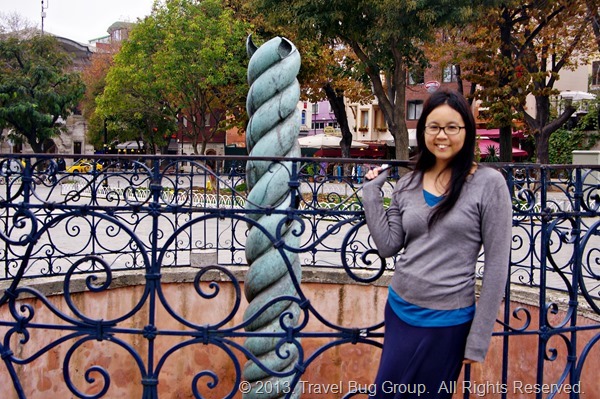
The Hippodrome was once used for horse races. There are three main points of interest through the middle: an Egyptian obelisk cut through the middle of the hieroglyphics erected as the spoils of war atop a carved marble base, another obelisk with pitted stone walls, and the Serpent Column (my favorite). Greek soldiers, fighting against the Persians, pledged their weapons to Apollo in order to win and when they did eventually win, they melted their weapons down to form the Serpent Column. It’s a nice place to walk around and read all the informational plaques.
Istanbul Archaeology Museums (Sultanahmet Stop)
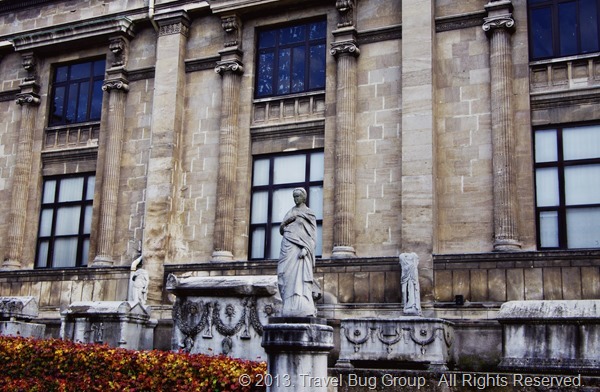
For 10 TL admission, you can experience 3 different archaeological museums. If you’re a fan of history, this is an amazing stop. You will OD on old objects, ranging from cuneiform through all the major civilizations to the Ottoman empire. One highlight is the tomb originally attributed to Alexander the Great (though it turned out to belong to one of his top commanders instead). The carvings along it, and other sarcophagi, are so intricate. I could’ve spent hours sketching all the designs but settled for taking an innumerable amount of pictures for future reference. There’s also a small tile museum full of gorgeous intricate tile designs from all around Turkey, where even the walls form an exhibit.
At the end of our visit, we headed to the WC (the bathroom). Next to the bathroom doorways, other statues and pieces of pillars lay scattered. Turkey’s history is so expansive, with so many different groups of people coming in and taking over, that they’re near to overflowing with artifacts from the small areas they’ve managed to excavate. Who knows how many hundreds of thousands of artifacts still lie belowground?
Topkapi Palace (see more in the RELIGIOUS category; Sultanahmet stop)
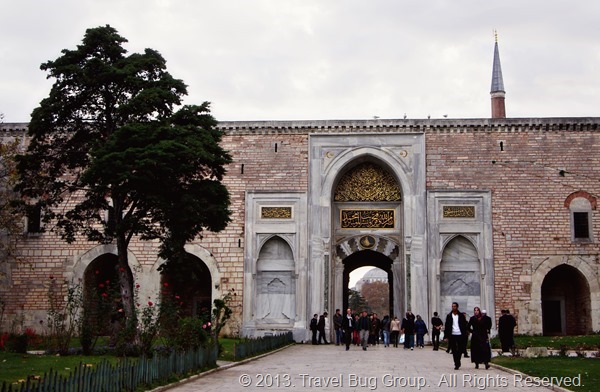
As we passed through the thick arched stone walls, guards stood by every entrance with submachine guns. The front courtyard is free to wander around in, the grass lush and the trees rustling above us. On most weekdays, crowds of students will crowd the whole area shepherded by weary-looking teachers, cheery kids who wave at you, saying hello at the top of their lungs, then turn shy when you wave back. To enter into the inner courtyard, the admission is 25 TL. The original palace of the Sultans, the palace rooms are wonderful to see but the real treat are the crown jewels. HUGE emeralds the size of my fist dangle from necklaces, jeweled thrones loom behind glass windows, and wicked-looking swords glint in the low lights. We shuffled behind a long line of people peering at gorgeous objects I couldn’t imagine owning much less wearing. If you walk down a cobblestoned path leading away from the palace, there’s a place with a great view of the Bosphorous Strait.
*Dolmabahce Palace (Kabatas stop)

The Dolmabahce palace was the last remaining sultans’ response to the modernized world, built in a western-ornate-style between 1843 and 1856 during the reign of Sultan Abdulmecid. Ataturk, the father of modern democratic Turkey & its first president, also lived here and even died in one of the rooms. For 40 TL each, we were able to visit the combined Selamlik & Harem sections. The price is actually for the short tours happening about every 25 minutes in English or Turkish, since you can’t wander around by yourself inside. Before entering, everyone slips on crackly blue slippers over our shoes. By the end of the tour, we started seeing random blue slippers along the hallways that’d somehow escaped. If you’re a fan of the decorative arts or interior design, I can guarantee you’ll be floored by the incredible details lurking in every room down to each doorknob and boiler. Plus, I think anyone can get a kick out of a chandelier so huge, it causes cracks in the ceiling. Paintings hang along every wall. Too bad, we don’t get the chance to linger by ourselves and enjoy each work of art. By the end, however, all the rooms can start to blur together (Rick’s eyes started to glaze over within about 20 or so minutes into each tour). This is the only place we’ve visited in Turkey that doesn’t allow photography. They say it’s to make sure no one lingers too long inside the buildings, but I’m not buying it.

If you don’t want to pay for the inside tours, there’s a gorgeous glass-roofed greenhouse to explore. We took shelter there to escape the rain, and I enjoyed watching the rain pattering down above us, surrounded by the hushed ambience of the otherwise empty room. Next to it, we found a series of small areas filled with exotic birds: strutting fancy frocked chickens and peacocks, pheasants and other unidentifiable flashing iridescent feathers. There’s also a free clock museum on the other end. Most of the clocks seem to come from the Rococo period, all fancy gold-tinged swashes and intricate details, but Rick and I gravitated towards the astronomical clocks.
**The Museum of the Republic’s First Bank or The Bank Museum (Eminonu stop)
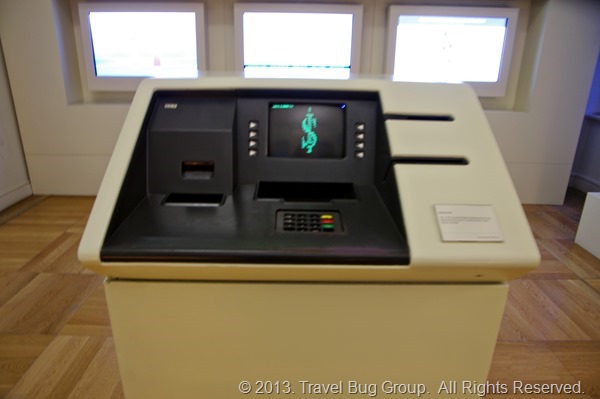
While visiting the Spice Bazaar, we stumbled upon this great free museum. Open everyday except Mondays from 10:00 to 18:00, it used to be the old main branch of Isbank established in 1924, the Republic of Turkey’s first bank by order of Ataturk. All the wall plaques & descriptions are in Turkish but you can get a free audio guide (just ask a guard) which narrates each sign in English. There’s a particular order to the exhibits and if the guards somehow sense you’re visiting in the wrong order, they will fly at you in a flurry of motion to make sure you head the correct way. It’s fun seeing how banks used to work, especially a "vintage" ATM machine. The beginning was a bit boring to me, mostly because I didn’t have the patience to stare at a piece of paper for more than 5 minutes while listening to the description in English, but the visit improved as we went through each exhibit culminating in the vaults beneath the bank. Definitely check out a small hallway behind one of the vault sections for a very Matrix-like light presentation.
Galata Tower (Karakoy stop)
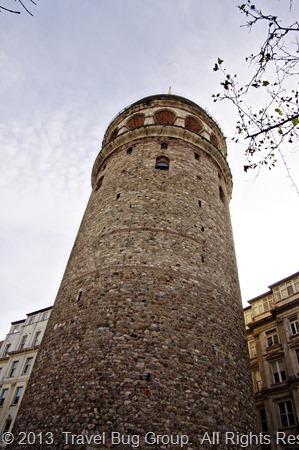
Most overpriced attraction, for me. Built in 507 during the sovereignty of Byzantine Emperor Justinianus, the tower measures 66.90 meters high from the ground & 140 meters from sea level with a diameter of 8.95 meters and wall thickness of 3.75 meters (I’m starting to get used to using the metric system…I’m going to be so confused when I get home). For the admission of 8 Euros, we squeezed in an elevator, then climbed a long flight of stairs to the top of the tower for a great, albeit extremely crowded, view. Aside from a couple descriptive plaques, there’s not much else to do but take some pictures, then head back down (unless you want to grab something to eat at their restaurant). In and out in about 15-20 minutes. Not recommended if you’re claustrophobic or acrophobic.

Istanbul Museum of History of Science and Technology in Islam (Sultanahmet stop)
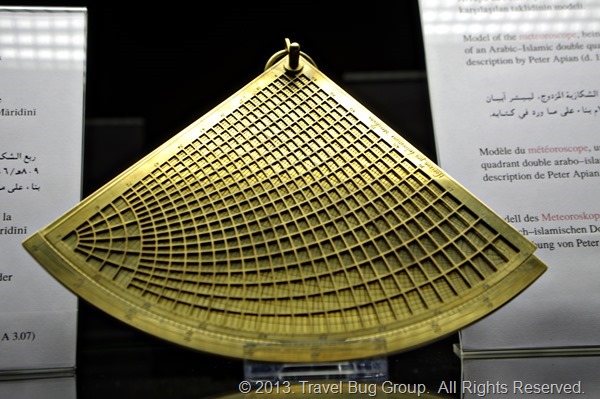
The 5TL admission price is definitely worth it, if you’re into science-y sort of things. Open everyday except Tuesdays from 9:00 to 17:00, this museum focuses more on the history side of science, rather than the science itself so don’t be expecting any sort of hands-on exhibits like most science museums. The exhibits range from astrolabes and astronomical viewing devices to weapons, medical instruments, and a large room full of different types of minerals. I was definitely looking forward to their museum shop and quite disappointed not to find one. Maybe they should hire me to design one for them. I can think of a ton of things they could carry to fit their theme.
Basilica Cistern (Sultanahmet stop)
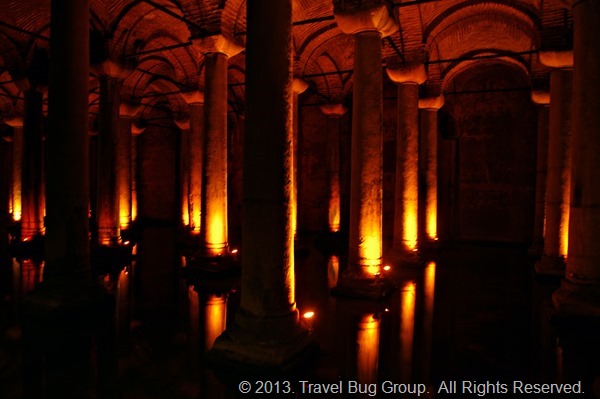
As soon as I heard about the Basilica Cistern, I wanted to check it out. One, it’s underground which makes everything twice as cool. Two, it’s featured prominently in Dan Brown’s new book, Inferno (which I was in the middle of reading at the time). I wasn’t sure what to expect. It’s a cistern, after all. How much can there be to see, really?
Paying our 10TL admission, we walked down a long set of stone stairs. Rick and I were not prepared for the oomph factor the Basilica Cistern wreaks on its visitors, that feeling of your breath leaving you and being replaced with a sense of awe. The eerie red lighting underneath the shallow layer of rippling water illuminating the albino fish in its depths, the symmetry of the columns giving a hall of mirror effects, the humidity pressing against my skin, and the echoing murmur of voices combine into a hellish fairyland. Walking all the way to the back, we’re confronted with two gigantic Medusa heads, one placed sideways and one placed upside down. There are a lot of theories as to why they’re placed so, but it adds to the mysterious feel of the place.
**Sultan’s Mausoleum (Sultanahmet stop)
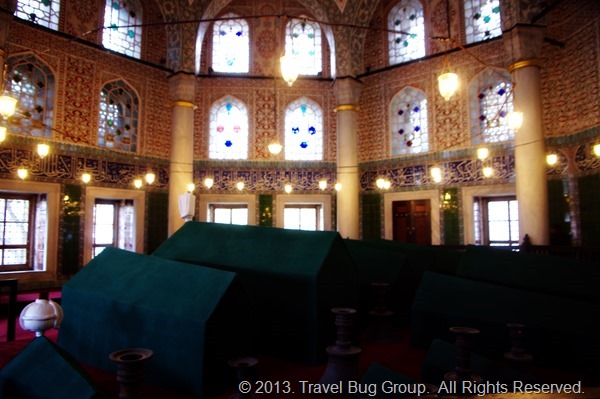
Right beside the Hagia Sophia, you can see a grouping of cylindrical buildings. There’s a small entrance to them off to the side, a metal detector just inside. Within, you can find the tombs of many sultans as well as their families. What I found most interesting, however, is the beautiful tilework found within. A random side-trip if you have extra time.
ART & CULTURE
*Museum of Innocence (Karakoy stop)
Ok, we never actually went here, but I wanted to give some attention to the first museum I’ve ever encountered dedicated to a single book, also named Museum of Innocence by Nobel Prize winner Orhan Pamuk. The book is about a man’s love for a woman and how he collects various objects representing his love for her, enough that he eventually creates a museum to house them all. In fact, at the end of the book there’s a ticket to that museum and if you bring it to the actual museum, they’ll stamp it and give you free admission. The museum not only has each object from the book but also a collection of other "ordinary" objects other people have added over the years. I really wanted to go, but I haven’t read the book yet (it’s 4th in my queue of books to read at the time of writing). I figure it’ll be a lot better if I have some idea what to expect inside, so I’ll save this museum for my second trip to Istanbul (whenever that is).
**Marmara University Art Gallery & Museum (Sultanahmet Stop)

At one end of the Hippodrome, there’s a large building through which we discovered a small art gallery connected to the Marmara University. The current exhibit explored the different types of printing, displayed in a series of brightly-lit white rooms. A good look at the artwork of budding Turkish artists.
**Arter & Salt Beyoglu & Photography exhibit at the Greek Consulate (Karakoy stop)
Arter is dedicated to modern art. On entering, there are individual pamphlets in both Turkish & English describing each exhibition. On the 3rd Floor (4th since the 1st floor is the 0th floor, it’s less confusing than I’m making it sound), there’s a reading/lounge area called Bahane where you can drink coffee, read the books they own, and watch selected arty short films. We spent a comfy couple of hours ensconced in a squishy couch & reading- Rick his philosophy & me about social psychology.
Be careful: the narrow marble stairs can be a bit slippery. While deep in thought, I misstepped and took a fall down a whole flight of stairs. It was quite comical with me bumping down the stairs for a good 30 seconds and Rick staring horrified down from the top. Don’t worry, I only ended up with a few bruises on my butt and an acute case of sheer embarrassment. Everyone was super nice and considerate to me afterwards. It’s not the first time I’ve taken a spill (see Bangkok Bike Tour) and it certainly won’t be my last. Open everyday except Monday from 12:00 to 19:00.
If you walk along Istiklal Avenue (see SHOPPING category), there are other galleries & antiquities bookstores. Others of note include Salt Beyoglu, another free modern art museum (including a great education component online with free downloadable resources) & a pretty awesome museum shop, plus a free photography exhibit we stumbled upon at the Greek Consulate.
RELIGIOUS
Topkapi Palace (see HISTORICAL category)
I already mentioned Topkapi palace in the Historical category but I need to mention it here also. There is a section of the Palace set aside for religious artifacts. Since Muslims believe in much of the Old Testament of the Bible, the religious artifacts include Moses’ staff and King David’s sword along with a lot of Mohammed’s belongings. Whether or not these are real artifacts, it’s fun to walk by them and see for yourself. Also, someone reads aloud from the Koran 24/7 and you can hear the rhythmic intonations over the loudspeaker as you walk through the rooms. Though I can’t understand the words, I think it’s a lovely concept.
**Sultanahmet Mosque (or Blue Mosque; Sultanahmet stop)
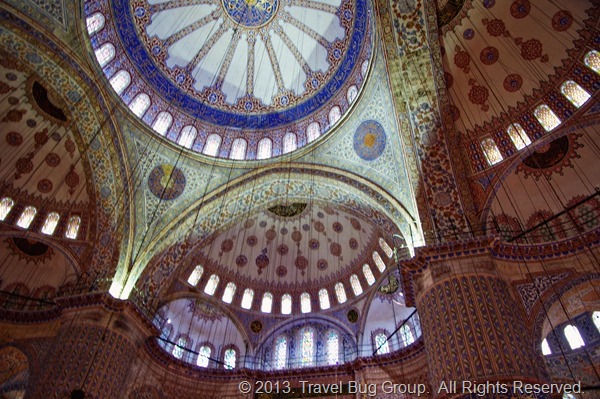
Its 6 minarets lit up at night, the Blue Mosque looks like a Disney castle from the outside. It’s free to visit, but requires women to don head scarf & shoes to be taken off. You’ll be given little plastic bags to carry them in. Also, no visitors are allowed during the hours put aside for praying times (since it’s still a working mosque). Built between 1609 and 1617 during the reign of Sultan Ahmed I, the Sultanahmet Mosque was first named the Blue Mosque for its famous handmade blue tiles from Iznik (more than 21,000) that decorate the inside. Dangling from the high arching domes, chandeliers float right above our heads like some fantasy come to life. The carpet is decorated with tulip & rose motifs. The tulip represents two hands in supplication or prayer. The rose represents Mohammed. Though the atmosphere we experienced is full of clicking cameras and smartphones held high, I can just imagine how beautiful it must be to pray with all the other worshippers amid all the history.
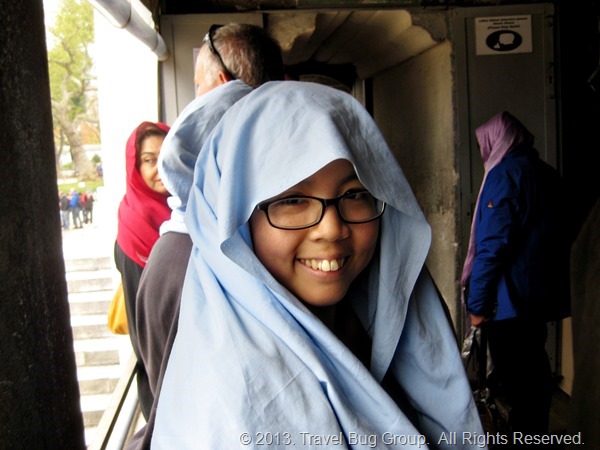
Hagia Sophia (Sultanahmet stop)
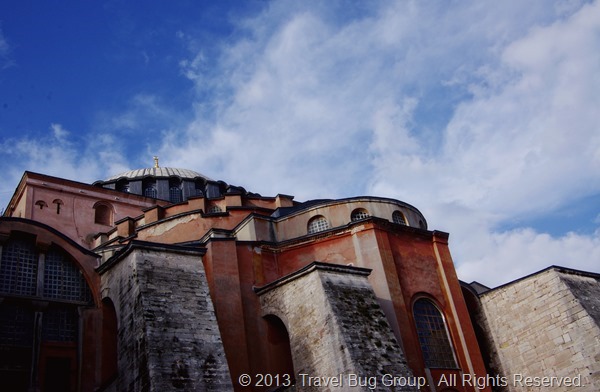
The Hagia Sophia started off as a church during the time of Constantine, then turned into a mosque, and now it’s a museum complete with 25 TL admission. Every layer of history is on display in a cacophony of religious traditions. Frescos of archangels fly next to Arabic calligraphy. The wooden enclosure for the Iman facing Mecca looks slightly askew within the original architecture. Look for the stone stairs leading up to the 2nd floor for a closer look at more frescoes and a great view from up top. We actually didn’t get to spend a lot of time since we visited during our day tour and only had about half an hour to explore, so I’m betting there are a lot of nooks and crannies to find. One thing I did learn from Inferno, is that if you put your ear to your ground, especially after its rained, you can hear running water, even from the 2nd floor.
Chora Church Museum 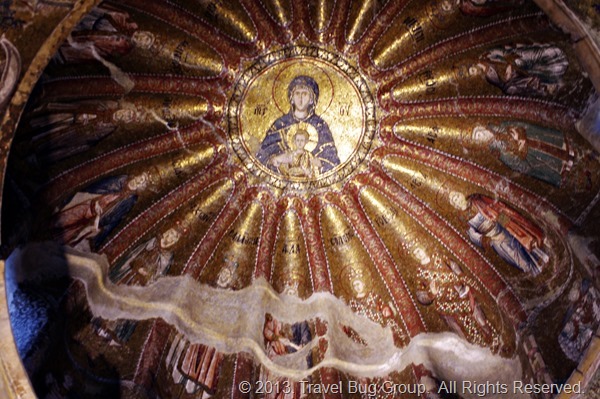
An old Byzantine church, this church is known for its gorgeous frescoes and mosaics. When we went, the main sections of the church was closed for renovation, so it wasn’t really worth the 15TL admission. However, the outer hallways still had some beautiful decorations and we saw pictures of the main chapels, so once it’s renovated, I’m sure it will take your breath away.
SHOPPING
I always get irritated when lists of "things to do for free" include shopping experiences (and long walks in random places but that’s another rant I’ll save for later). Of course it’s free. People want you to go to spend money. So, I’m not going to mark these shopping experiences as free, even if you want to go just for the ambience.
Grand Bazaar (Beyazit stop)
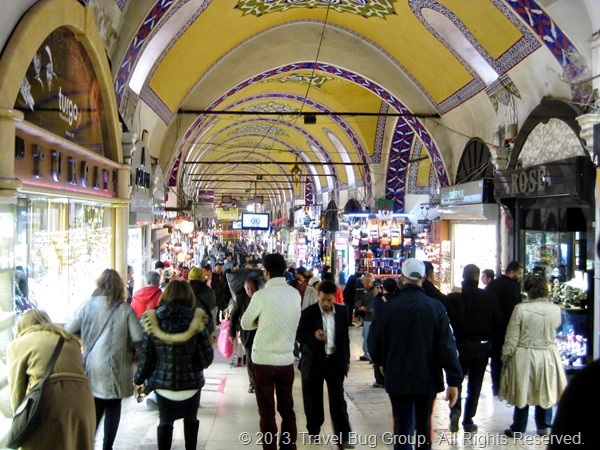
For me, the Grand Bazaar was a bit of a let-down for me personally. Yes, it’s quite extensive and full of lots of interesting things. However, everything on offer is technically in the "souvenir" sort of category. Nothing practical. Nothing edible aside from a few cafes. And anytime I glanced at any window for the barest moment, an effusive person will appear to try to make a sale. Even when not looking, I had people calling out "Ni hao" and other hellos in various Asian languages constantly. It was a bit overwhelming for me so I actually didn’t purchase anything from the Grand Bazaar. My favorite thing here are the signs hanging from the ceiling telling you interesting facts about the history & construction of the Grand Bazaar. It’s pretty easy to get lost in the maze of corridors, so remember the number & name of the gate you came in from.
Spice Bazaar (Eminonu stop)
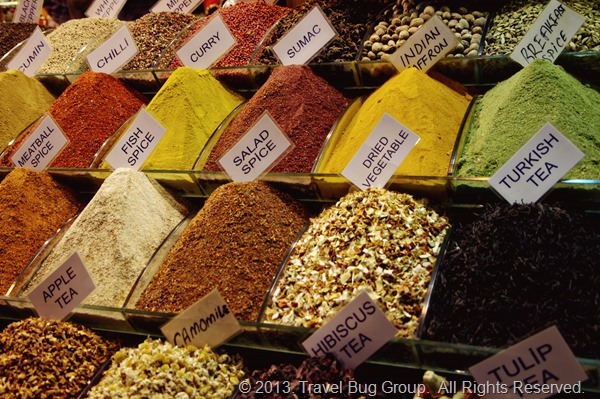
On entering the Spice Bazaar, I’m immediately hit with the musky earthy scent of spices piled everywhere in colorful piles. This is the place to go for spices, sweets, drink mixes, nuts, meats, and cheeses of all sorts. I loved walking through the corridors and soaking in the atmosphere, especially when it’s raining outside. Outside the Spice Bazaar, on one of the corners, there’s a large nut shop with decent prices. We saw some big shot guy standing outside there with a lady just to hold his umbrella & wipe rain off his shoulders and 2 bodyguards with little earpieces sticking out of their ears.
On exiting the other end, you’ll find a lot of small restaurants & stalls. I’m not sure exactly where it is, but if you wander around there and you see someone making flat round desserts in small metal pans outside a small restaurant, go into the restaurant and ask for goat head soup. It’s not on the menu but it’s SO good. The meat’s tender and the soup has a slight spiciness to it. Plus, get one of the desserts, called "kunefe". It’s cheesy & syrupy & pistachio-y. I’m getting hungry just thinking about this place.
Istiklal Avenue (see ART category; for Galata Tower area, it’s the Karakoy stop; for Taksim square, take tram to the Kabatas stop, then the Funicular to Taksim Square)
If you’re a hipster or just like a good spot of modern shopping, this is the place to go. No solicitors along its entire length from Taksim Square to the area around Galata Tower. For more hipster, head in the Galata Tower direction with a Lomography store and little cafes and indie fashion. For more modern, head in the Taksim Square direction for Mango & Zara sort of fashion plus fast food and tons of bookstores & art galleries. Also, a lot of embassies are here, so it’s fun to peer through the gates and stare at the beautiful ambassadorial homes.
Oh, and if a guy comes up to you offering hashish, don’t be like Rick and ask him the price out of curiosity, then follow that guy to a back alley to his "office". If you say no afterwards, the guy will follow you for a very long uncomfortable while and will end up threatening "I will make very big trouble on you".
Shipping things home
Your best bet is probably DHL, where we shipped things home from. There’s a DHL office right next to the Basilica Cistern on the second floor (you’ll see the sign). It’s a bit pricey and they’re insane about what you can & can’t ship, but it’s super safe & super fast. If you’re shipping a lot of random stuff, as we were, make sure you have about 2 hours to spare & some patience.
Haggling
My philosophy is that if something doesn’t have a price blatantly posted, you are free to haggle. Someone tried to sell us a set of 4 batteries for 18TL. When I walked away after telling the man I’d previously bought batteries for 8TL, the price immediately dropped to 9TL.
NATURE
Bosphorous Cruise (Eminonu stop)

If you walk around Sultanahment Square, I can guarantee you’ll get inundated with people asking whether you’d like to go on a Bosphorous Strait cruise. Intrigued, we hopped on the first inexpensive boat leaving from Eminonu advertising a Bosphorous cruise for 10TL each, so I can’t guarantee that my experience fits with any of the more "proper" tours. However, I found our personal experience a bit overrated. For the first 20 minutes, Rick and I oohed & aahed & took a bunch of pictures from our open-air perch on top. Then boredom set in, followed by coldness. Our trip took 1 hour each way. On the whole return trip, we sat inside, and actually napped all the way back. It’s nice, I suppose, but if you just want a view of Istanbul by water, then I say take the ferry to Prince’s Island (which comes next).
Princes’ Island (Kabatas stop, then a ferry to the island)
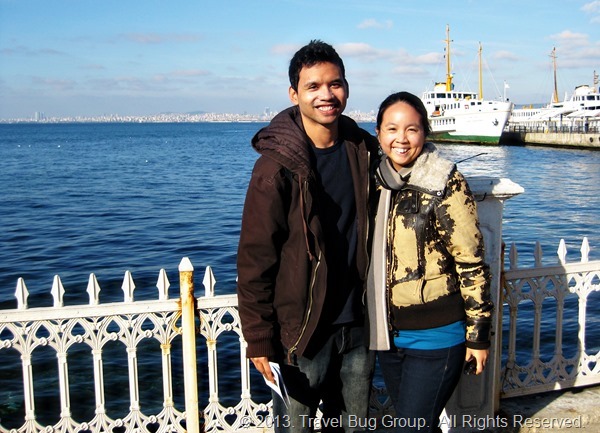
On our day trip around Istanbul, we met an older Pakistani couple who enthused about Princes’ Island. Since we had plenty of time in Istanbul, we waited for a nice sunny day and headed for the ferry departing from near the Kabatas tram stop. You can still use the Istanbulkart for a less expensive ferry ride. Prince’s Island is actually a bunch of smaller islands. Since it was our first time, we headed for the big island of Buyukada. The ferry ride took us about an hour (since we took the slower ferry), with a nice view of Istanbul and then the various islands we passed.
Prince’s Island is known for 3 things: horse-carriage rides, fish restaurants, and the place where Trotsky (along with lots of other unwanted royalty…hence the name) lived in exile. The only thing we availed ourselves of is the fish, delicious but a bit pricey. Since it was a slow day tourist-wise, we had one particularly persistent horse-carriage driver who spent a good 10 minutes trying to convince us to take a ride. Since we wanted to walk the island instead, we kept refusing. He drove away. Then, since we walk slowly, he came upon us again. We refused again whereby he proceeded to cuss at us, then drove away again. I told Rick that if he encountered us one more time, he might just throw horse poop at us in disgust. Thankfully, we made it to our destination without seeing him.
Most of the island is taken up by sleepy neighborhoods and large swathes of forest. It’s a very peaceful hike, the sun dappling through the trees. At one point, we came upon a large haunted-looking mansion, all dilapidated wooden walls and cobwebbed windows and surrounded by chickens. We peered through the metal gates & imagined eerie ghost stories. As we kept walking, three horses thundered down our path. We scattered to the side and watched as they flew past us chased by a pack of barking stray dogs.
On our way back, an elderly man hopped on the ferry with his violin, sitting next to us. As the ferry started moving, he jumped up, tuned his violin, then serenaded the entire boat with rousing music, before passing his hat around & hopping off at the next stop.
CONCLUSION
*whew* *high-five* We made it through the whole post! Really, Istanbul has something for everyone as long as you have the patience to delve within. We had an amazing time. In fact, beyond what I’ve written here, Rick and I discovered so many other places to explore that I’m sure we’ll still find new experiences if we ever come back for a second visit. If you’re ever there, I hope you find what you’re looking for.
I loved Istanbul! Wished I had more time there. Were you also able to see the Sulemaniye Mosque?
I know. I can definitely see us going back a few more times to see everything. We only saw the outside of the Sulemaniye Mosque, but didn’t have a chance to go in. Did you have a chance to see it? Did you like it?
Dang!!!!!!! Great post, Tina!!! Turkey looks beautiful, and it looks like you guys are having a wonderful time! Miss and love you both!
Thanks Thea! Miss you too! <3